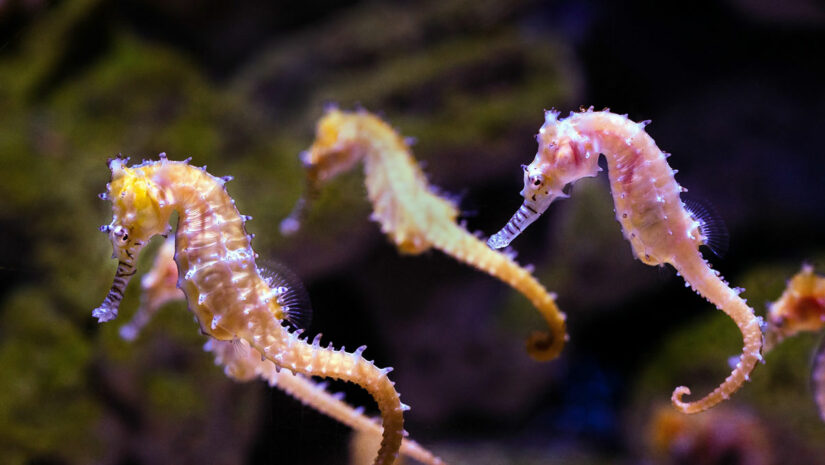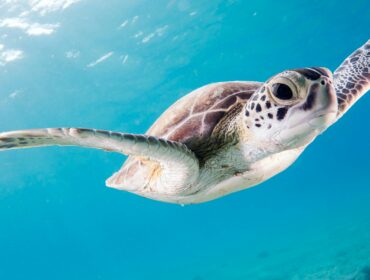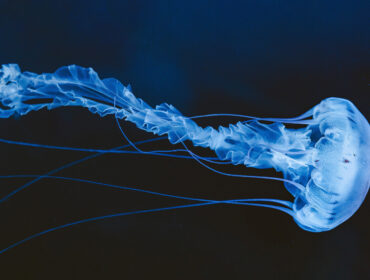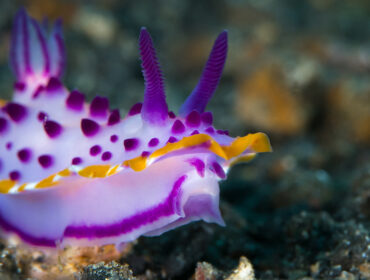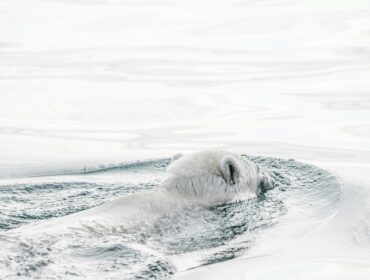Seahorses are a favorite of the marine animal kingdom. Adults and kids alike adore these underwater equines, but although we know they’re not horses, are they really fish? Find out the answer to this and more with these ten fun seahorse facts!
There are over fifty species of seahorse ranging in size from a little over half an inch (1.5 cm) to 14 inches (35.5 cm). They live in warm and calm shallow marine waters that have plenty of food and anchor points around which they can wrap their tails.
Before we jump into fun seahorse facts, let’s get one thing out of the way:
Why are seahorses called “seahorses”?
For starters, they are called seahorses because of the similarity in the appearance of their head to a horse’s head. Seahorses swim in an upright position, using a delicate dorsal fin on their back. Small fins on the side of their heads (pectoral fins) are used for maneuvering.
Scientific research has evidence that suggests the seahorse is actually a highly evolved pipefish. It is hypothesized that seahorses evolved into their own branch as a result of tectonic changes in the earth, resulting in the creation of shallow waters that were hospitable to many types of marine plants, including sea grasses.
Because the nature of seagrass is characterized by its vertical growth to reach the sun’s light, scientists believe this is what caused the upright posture of the seahorse, as opposed to the horizontal swimming of most fish species.The renown snout, lending to its name, is a carryover from their ancestors, the pipefish; while adaptation to their new environment has created the camouflage that helps protect them from predators.
Seahorses are among the most unique and interesting animals that can be found beneath the surface of the ocean. These tiny fish are mysterious to those who see them and want to know more about them. There are many incredible seahorse facts out there, but these are just a few of them.
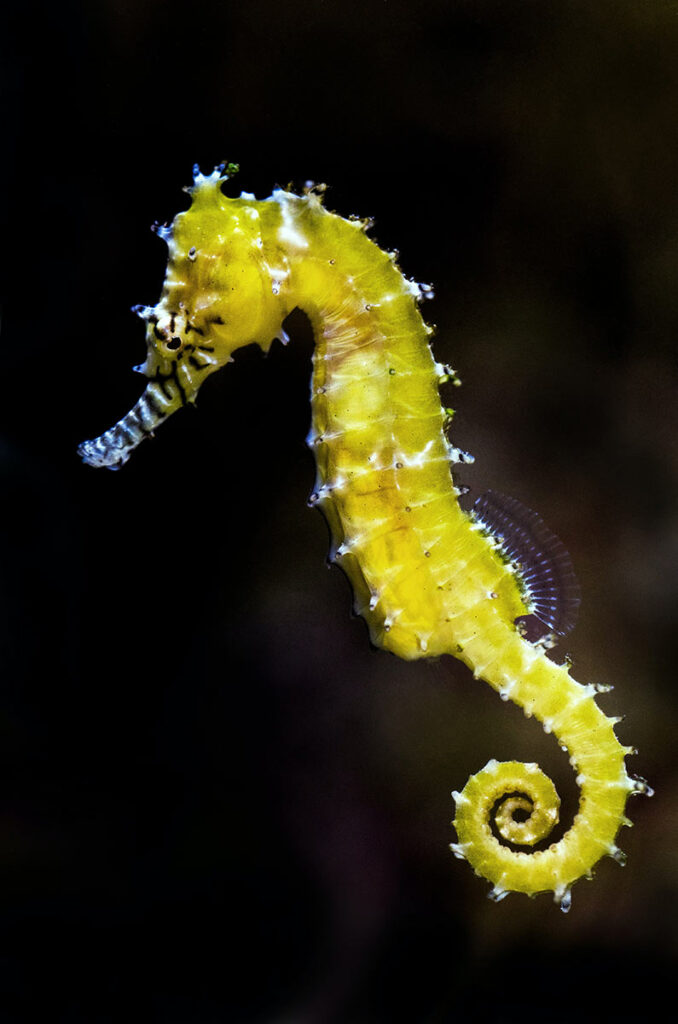
11 Seahorse Facts You Should Know
They have a big appetite
In fact, they eat almost constantly. Since they have neither teeth nor stomachs, food passes through their small bodies very quickly, so they have to eat at least 30 meals per day. Their digestive systems work so quickly that food moves too rapidly through their bodies to absorb much nutrition.
Their snout makes an efficient feeding tool in the way that it adds an extension to the hunting method. One seahorse can scarf down up to 3,000 brine shrimp per day. They also love to eat plankton.
Small shrimp and other crustaceans make up the primary diet of the seahorse, ingesting them into mouths that operate like trapdoors. When the seahorse sees viable prey, it maneuvers into position, and then snap! The trapdoor opens and shuts quickly, causing a little eddy that sucks the prey right into the seahorse’s mouth.
They mate for life
Seahorses are also among only a few other fish species that mate for life. They renew this bonding every day with a courtship display that can last for an hour. In this display, they swim up to each other and change color as they get closer. Next, the male swims around the female, and the pair then swim around a small object with their tails entwined, like a pair of dancers twirling the night away. The monogamous seahorse employs this complicated mating ritual of dancing with their prospective partner for as long as eight hours.
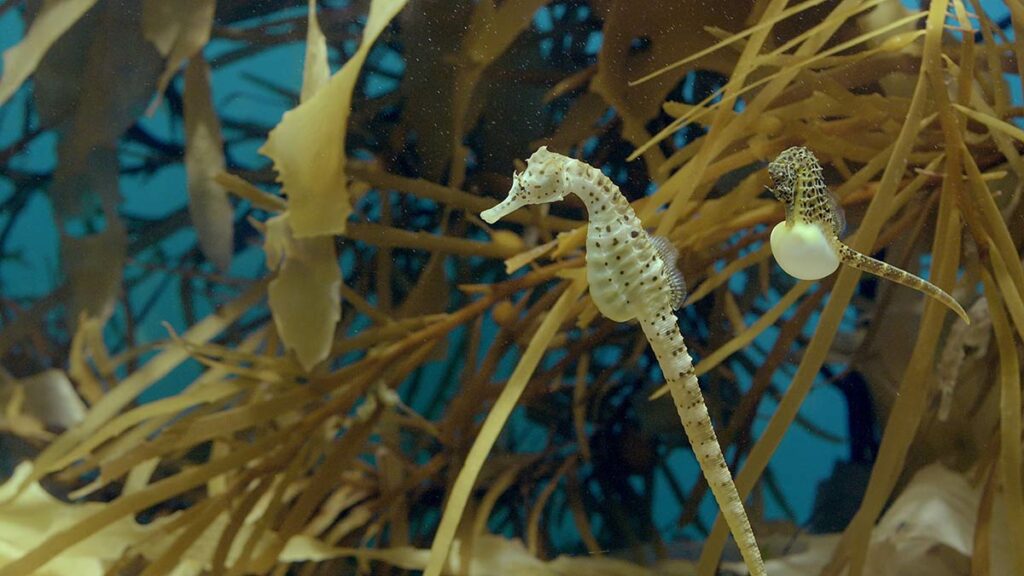
Male seahorses have babies!
This is one of the more well-known seahorse facts. Seahorses engage in a courting period where they swim together, intertwine tails, change colors, and share the same anchor point. When they mate, the female deposits eggs into a pouch on the male’s belly and he carries these until they hatch. When it’s time to give birth, the male will contract his abdomen repeatedly, spitting out tiny, fully formed seahorses. The gestation cycle takes a few weeks, or sometimes even months. Giving birth is a long and tiring business for seahorses with contractions lasting up to 12 hours for some species. The male seahorses carry up to 2,000 fry in their pouch!
Males seen expelling the hatchlings from their pouch gave rise to the old wives tale that males were the ones giving birth.
A female seahorse will typically require a resting time between pregnancies. With the male busy incubating the fry, the female is free to begin producing yet another batch of eggs, therefore accelerating the breeding process, allowing for higher rates of reproduction. The male is ready to host another clutch as soon as the current round of fry are expelled from his pouch.
Their tails are a valuable tool
Land based horses may make use of their tails to shoo flies away, but the seahorse will use their powerful tails as a weapon when fighting over food or territory, or as a way to anchor themselves during a storm. Mated pairs will even be seen swimming with tails linked, perhaps their version of holding hands.
Their prehensile tail is helpful in grasping a fixed object, like a blade of seagrass or a coral finger, and hold themselves in place.
They have superb camouflage capabilities
When discussing seahorse facts, we can’t leave out their stunning ability to camouflage themselves in their environment. They can protrude and retract their spiny growths and change colors rapidly to match their surroundings.
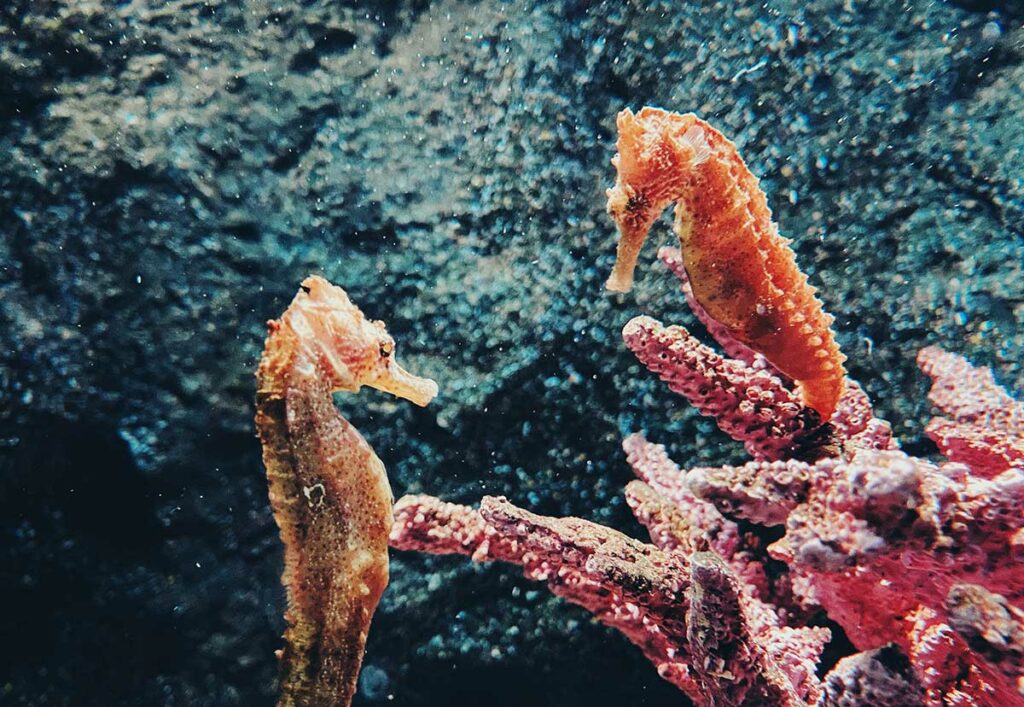
Their eyes work independently of one another
Another amazing seahorse fact is that they can actually look backwards and forwards at the same time. This is possible because their eyes work independently of each other, which is useful when looking out for predators while consuming one of their many meals.
Speaking of predators, they don’t have all that many
The bony seahorse doesn’t appeal to too many fish. They are, however, a favorite meal of the crab. Humans are a threat as well, who harvest them faster than they can reproduce, mostly for sale to aquariums or in souvenir shops.
They have unique identifying markings
And while two individuals may be the exact same species, their markings are unique to each one. A small crown, called a coral net, is different on each seahorse much like the stripes of a zebra are unique to each one. The spiky crowns on their heads are the equivalent of human fingerprints — no two are ever alike! It’s quite likely that you’ve swam right past one on a dive or two, never even knowing it was there.
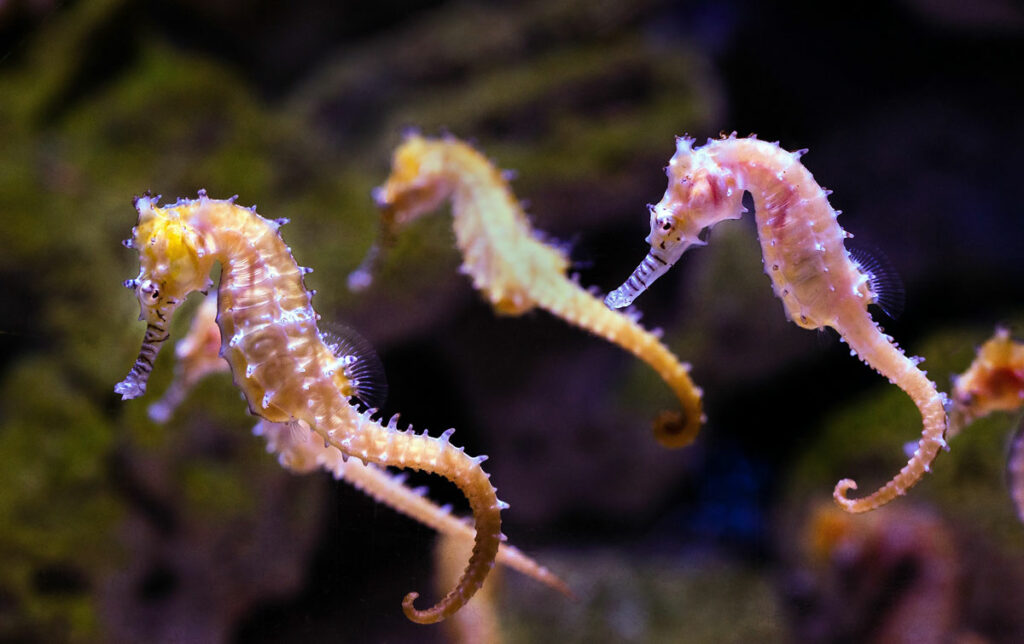
They’re poor swimmers
Seahorses are very poor swimmers. The slowest fish in the world is the dwarf seahorse, which traverses only five feet (1.5m) in an hour. Their unusual body shape means that they have to use a small fin on their backs to propel themselves forward. To change direction, they use even smaller fins on the back of their head. If they ever get caught in a storm, then they will likely die because they can’t swim their way out.
They have a brain and a hard exoskeleton rather than scales
Instead of scales, they have an exoskeleton consisting of hard plates that is covered with skin.
And, yes, seahorses have a brain, like most other fish do. And, as an extra fun fact, the human brain is named after the seahorse (hippocampus), this is because it resembles a seahorse in its shape.
Seahorses are fish
Is a seahorse a fish? Yes! They have a swim bladder for buoyancy, gills to breathe, and fins to help them swim. Seahorses come from the genus hippocampus, which in ancient Greek translated as hippo: horse, and kampos: sea monster. Despite their unique appearance, they are, in fact, a fish.
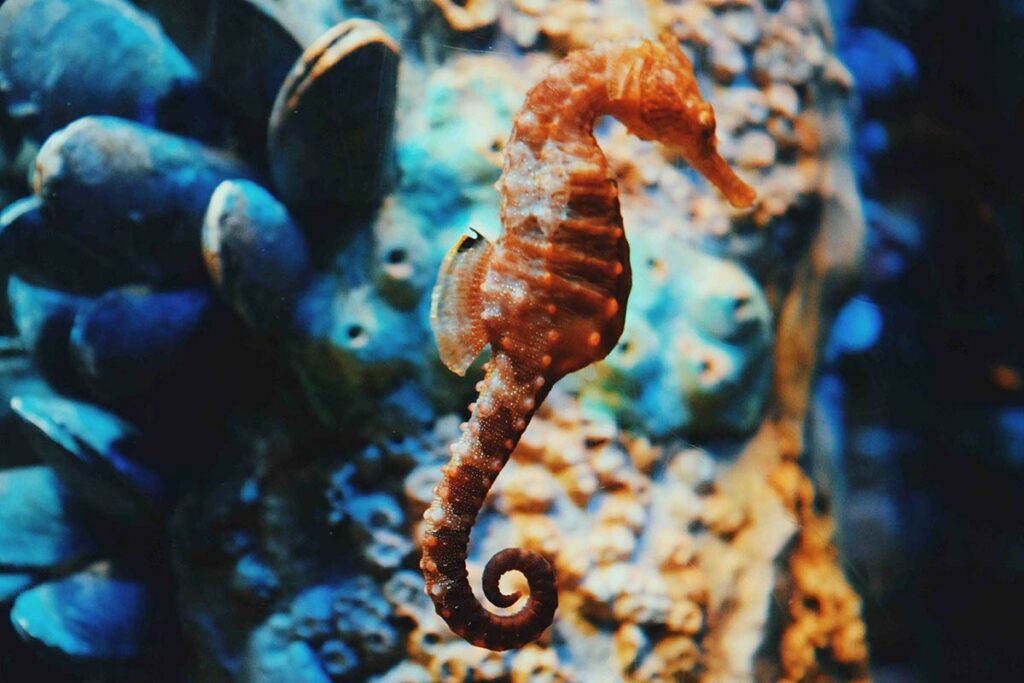
The Majestic Seahorse: Questions Answered
A fun seahorse fact is that baby seahorses are called fry. When a fry is born, it is left immediately to fend for itself. It will spend the first few weeks of its life drifting along with plankton.
A seahorse usually attaches itself to seagrass, branches, or shells on the ocean floor to sleep in an upright position. They hold on to avoid being taken with the current.
A seahorse can live between around four to six years in the wild. The larger ones tend to live longer than the small.
As of this moment, seahorses are not extinct. However, they are popular among aquarium enthusiasts, and are regularly proffered as street food or used in medicines by eastern cultures. Based on this usage alone, it is questioned if seahorses are in danger of being overfished. Additionally, oil spills in oceans also threaten seahorse life.
While there is insufficient data to support such claims, one factor that cannot be refuted is the endangerment of their habitat: the coral reef systems. Time will tell if the seahorse will remain resident of our oceans, or dissipate into folklore and legend…

